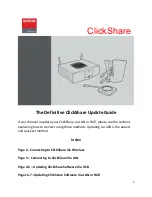
9 Using the vLocPro2
Page 55 of 72
9.3.4
Searching (sweeping) an Area
In any given area, it is likely that buried pipes and cables are not parallel to each other, frequently they will
cross the area being searched at a variety of different angles and depths. As the response of locator
antennas is directional, it is important to search the area in the same or similar pattern as below. This orients
the antennas in a way that will locate any signals being radiate from the buried line. Once a response is
found, then trace and pinpoint the line and mark. Searching an area in this way is generally (but not
exclusively) done in the “Peak” mode using passive locating.
9.3.5
Tracing a Buried Line
Once a buried line is located it is generally necessary, and a good practice, to trace that line for some
distance in both directions. Whenever practical it should be traced to a point that provides additional
confirmation of what type of service is being located (a telephone pedestal, a manhole cover etc). If tracing a
line to which a transmitter signal has been applied, one should trace out from the transmitter connection point.
The receiver should be held level to the ground and rotated in a small arc across the anticipated route of the
buried line. A clear response should be visible on the display and heard audibly.
9.3.6
Pinpointing & Confirming the Buried Line
Marking the exact position of the buried line is generally called pinpointing. Pinpoint the line before marking
its position. Place the receiver in “Peak” or “Left/Right” mode, pass the blade of the receiver across path of
the cable and identify the peak response on the display and/or audibly.
(a)
(b)
















































